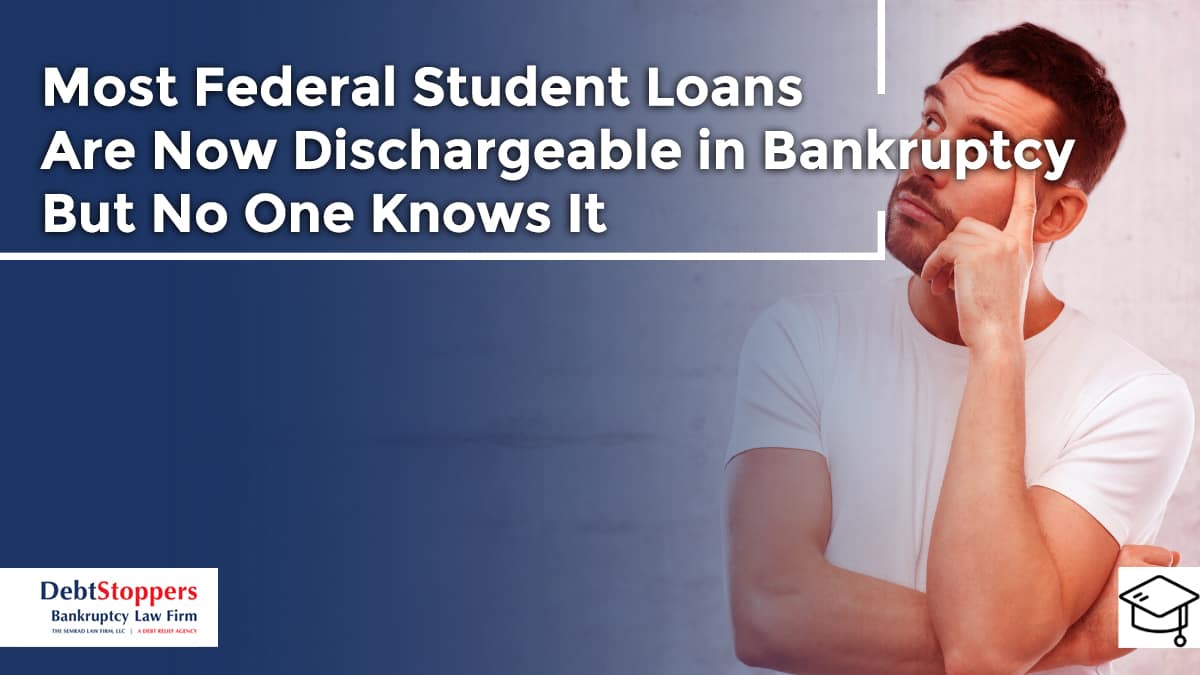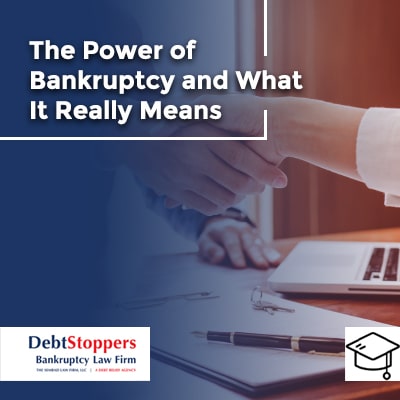Most Federal Student Loans Are Now Dischargeable in Bankruptcy — But No One Knows It

The student loan crisis in America is staggering—over 42 million borrowers, nearly $1.8 trillion in outstanding debt, and countless lives burdened by payments that never seem to end. For years, borrowers have been told there’s no escape. “You can’t get rid of student loans in bankruptcy.” That statement, repeated endlessly by the media, financial advisors, and even attorneys, has effectively become gospel.
But here’s the truth: It’s no longer accurate.
In late 2022, the U.S. Department of Justice and the Department of Education quietly issued a landmark policy shift that made most federal student loans dischargeable in bankruptcy. This is not an opinion. It’s not a loophole. It’s an actual change in federal enforcement policy—and it’s already being used successfully by attorneys like me to eliminate student loans for deserving clients across the country.

The 2022 DOJ Guidance: A Turning Point
Until 2022, discharging student loans in bankruptcy was notoriously difficult. Debtors were required to prove “undue hardship” under a vague and inconsistently applied standard called the Brunner Test. Judges, fearing abuse or being overturned on appeal, rarely granted relief. The result? Student loan discharge in bankruptcy became a legal dead end.
Then everything changed.
In November 2022, the Department of Justice announced new standardized procedures for handling student loan adversary proceedings. These new guidelines don’t rewrite the law—but they redefine how the DOJ applies it, bringing clarity and compassion into what was previously an opaque and punishing process.
Under the new policy, borrowers who meet certain life circumstances are presumed eligible for discharge. In fact, if the borrower completes a short attestation form and meets any of the following criteria, the government will now recommend discharge:
-
You’ve been out of school for more than 10 years.
-
You never graduated.
-
You are over 65 years old.
-
You’ve been unemployed for five years.
-
You have a medical or mental health condition that limits your ability to repay.
These are not technicalities. They are the everyday realities of millions of Americans—people for whom student debt has become a life sentence. Now, for the first time in decades, bankruptcy offers them a real way out.
So Why Hasn’t Everyone Filed?
Since 2022, I’ve filed dozens of these adversary cases on behalf of my clients. We’ve had remarkable success discharging debts that were once considered untouchable. These are not outliers. They are normal people who were never told they had rights under the law.
But here’s what puzzles me: We haven’t seen a flood of filings. In fact, I am one of largest filers of these cases in the country. Nationwide, the numbers are shockingly low. Why?
Two reasons:
First, government collections were on hold.
For nearly five years—since the beginning of the pandemic—the Department of Education paused all student loan payments and collections. With no wage garnishment, no intercepted tax refunds, and no calls from debt collectors, the pressure was gone. Borrowers could ignore the problem, even as the balance grew.
Second, people held out hope for broad forgiveness.
The Biden administration made debt relief a signature issue, and millions believed that sweeping cancellation was just around the corner. But after the Supreme Court struck down the president’s forgiveness plan in 2023, that dream came to an end. A few smaller relief programs remain, but the idea that someone else will fix this for you? That window has closed.
Now collections have resumed. Tax refunds are being garnished. Wages are being seized. And yet, the public still doesn’t know that bankruptcy has become a viable solution.

The Power of Bankruptcy — and What It Really Means
Here’s the reality: if you qualify under any of the DOJ’s new guidelines, you don’t need to suffer in silence anymore.
You can file a Chapter 7 or Chapter 13 bankruptcy, submit a simple attestation form, and initiate an adversary proceeding to have your student loans discharged. You do not need to prove total disability. You do not need to be destitute. You simply need to demonstrate that your current and future circumstances make repayment unreasonable—and the DOJ will help make your case.
If you have:
-
Medical issues,
-
A history of unemployment,
-
A long period since you left school,
-
Or a degree you never completed…
…you may qualify. And the best part? These cases are no longer adversarial. The government isn’t fighting tooth and nail to stop you. In many cases, they are agreeing to discharge the loans.
This is a revolution—one that Congress didn’t pass and the public didn’t notice. But it’s real, and it’s happening now.
What You Should Do Next
If you or someone you love is struggling with student loan debt, talk to a bankruptcy attorney who understands the new policy. This isn’t something to wait on. The government is already resuming aggressive collection efforts, including:
Don’t let myths or old assumptions stop you from exploring your rights. Bankruptcy law has always promised a fresh start—and now, for the first time in decades, that promise includes student debt.
Final Thoughts
As a bankruptcy attorney, I’ve seen firsthand how this policy change is restoring hope to people who thought they’d carry this debt to the grave. The process is clear. The criteria are attainable.
And the results are life-changing.
But people need to know. So please—share this information. If you’re a lawyer, educate your clients. If you’re a borrower, ask questions. The door is open now, but too few people are walking through it.
Student loans are dischargeable. Bankruptcy is an option. And your future can be free.





